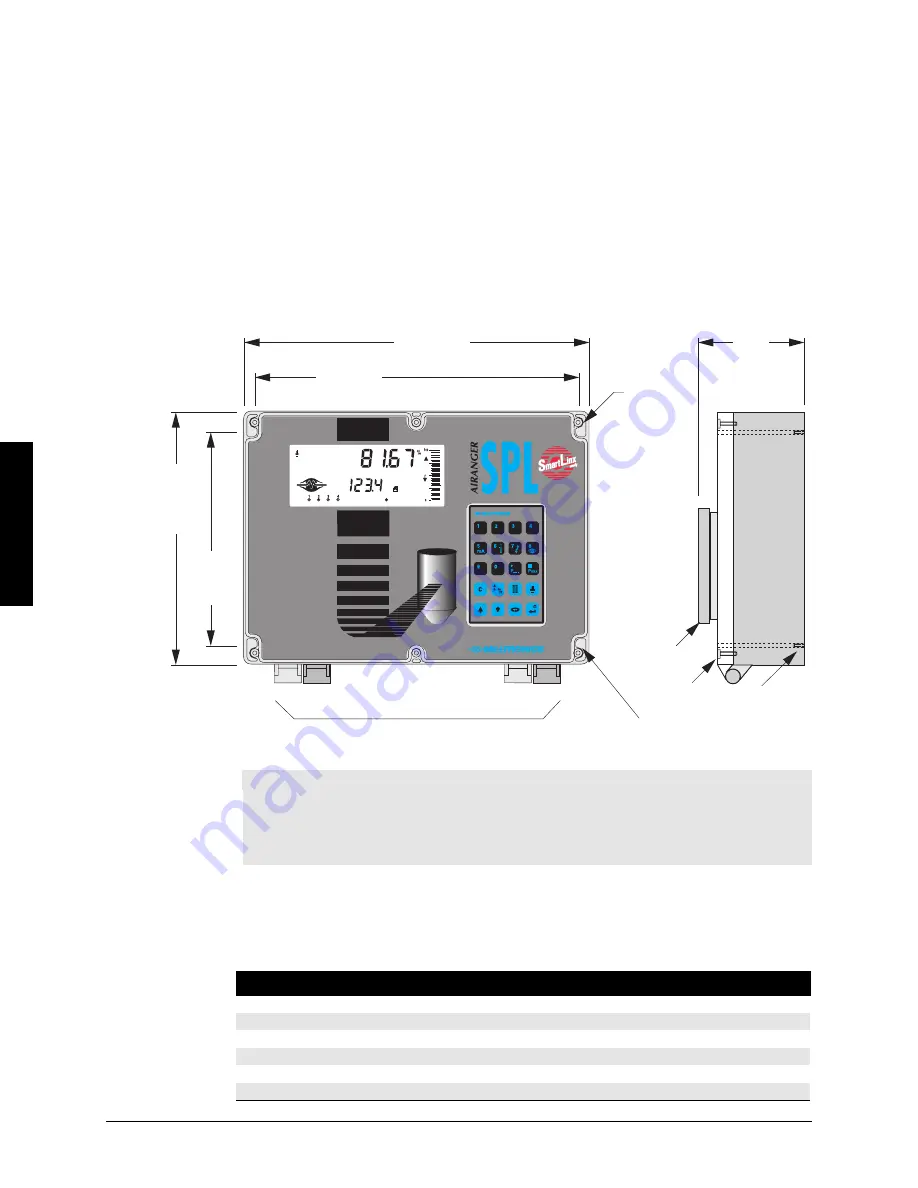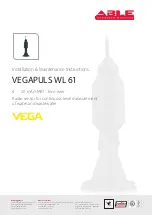
Page 16
AiRanger SPL
PL-573
Installation
Mounting
Inspect all cartons and packaging for possible damage during shipment, before
removing the SPL and associated equipment.
1. Loosen the 6 enclosure lid (captivated) screws and swing the lid open.
2. Remove the 4 Board B mounting screws (outer corners) and remove the circuit board
assembly.
3. Drill sufficient holes in the enclosure bottom to meet enclosure cable/conduit entry
requirements.
4. Attach the enclosure to the selected mounting surface. (4 predrilled screw holes provided.)
5. Attach the conduits/cable hubs to the enclosure. (Do not apply undue force.)
6. Reinstall the circuit board assembly.
Warnings:
•
Non metallic enclosure does not provide grounding between
connections. Use grounding type bushings and jumpers.
•
This product is susceptable to electrostatic shock. Follow proper
grounding procedures.
Transducer Mounting
Objects near the transducer face cannot be reliably detected. Mount the transducer
above the highest material level (away from the nearest monitored object) by the
following
Nearest Distance
.
Nearest Distance
Transducer Types
0.45m (1.5ft)
XCT-8, XCT-12
0.3m(1 ft)
ST-H, ST-25, XRS-5, XKS-6, XPS-10, XPS-15, ST-50
0.6m (2 ft)
XPS-30, XPS-40
0.9m (3 ft)
ST-100, LR-21, XLT-30, XLS-30
1.2m.(4 ft)
LR-13
1.8m (6 ft)
XLT-60, XLS-60
285 mm
(11.2”)
209 mm
(8.2”)
267 mm
(10.5”)
106 mm
(4.2”)
Suitable location for conduit entrances.
Use water tight conduit hubs to maintain the enclosure rating.
mounting hole, 4.3 mm (0.17”)
diameter, access under lid
(4 places).
172 mm
(6.8”)
lid screw
(6 places)
programmer
lid
(hinged)
customer
mounting screws
Summary of Contents for AiRanger SPL PL-573
Page 1: ...AIRANGER SPL Instruction Manual PL 573 March 2001 IRANGER SPL 33455730 Rev 1 2 ...
Page 8: ...Page 8 AiRanger SPL PL 573 Specifications ...
Page 24: ...Page 24 AiRanger SPL PL 573 Installation ...
Page 86: ...Page 86 AiRanger SPL PL 573 Enhancement Param ...
Page 102: ...Page 102 AiRanger SPL PL 573 Maintenance ...
Page 108: ...Page 108 AiRanger SPL PL 573 Troubleshooting ...
















































